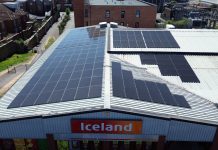Britain may have to spend big on next generation nuclear to secure Net Zero, adding between 10GW and 50GW before 2050, innovation think tank Energy Systems Catapult (ESC) has calculated.
Ignoring probable cost reductions offered by higher-powered reactors will make progress ‘riskier’ to the mandated target, says the agency’s new report ‘Nuclear for Net Zero’.
The report recommends Whitehall must now:
- commit to three more Hinkley C-sized reactors
- experiment by 2025 with higher temperature ‘Generation Four’ reactors as sources for hydrogen
- examine potential from new water-cooled ‘small and medium reactors’ (SMRs), to make hydrogen for road and marine transport, plus warm ‘city-scale’ heating networks.
Hinkley C’s capacity is 3.2GW. SMRs are classified as under 300MW in output. Generation Four reactors now being trialled range from 200MW-plus. Rolls Royce is keen to try and build SMRs.
The report’s method draws on carbon budgets, technology forecasts and robust models used by the independent Committee on Climate Change.
While new nuclear today is best known for delays and massive cost overruns, the ESC finds “a credible path (is) available to realise significant nuclear cost reduction, delivering potentially lower costs”.
“While wind, in particular offshore wind, now looks the key technology for decarbonising power in the coming decades … trying to meet net zero without any new nuclear would put the target at risk unnecessarily and potentially make the shift to a low carbon economy more expensive,” per the report.
“If nuclear is able to fulfil its cost reduction potential, and contribute to the challenges of decarbonising heat and hydrogen, around 50GWe of nuclear may be needed by 2050.”
Close monitoring will be needed to check nuclear delivers on its cost cutting, accepts the ESC.
“Provided that costs reduce in line with the analysis we have reported, the deployment decision regarding new large nuclear is not whether to start, but when to stop,” claimed ESC nuclear practice manager Mike Middleton.
In February 2020, EDF’s newly formed Hynamics unit was reported to be pondering channeling output from its UK fleet into hydrogen electrolysis, via a 2MW proton exchange membrane (PEM) electrolyser.
See the Energy Systems Catapult report here
Related stories:
Mini nukes ‘could decarbonise heat and transport and balance renewables’



